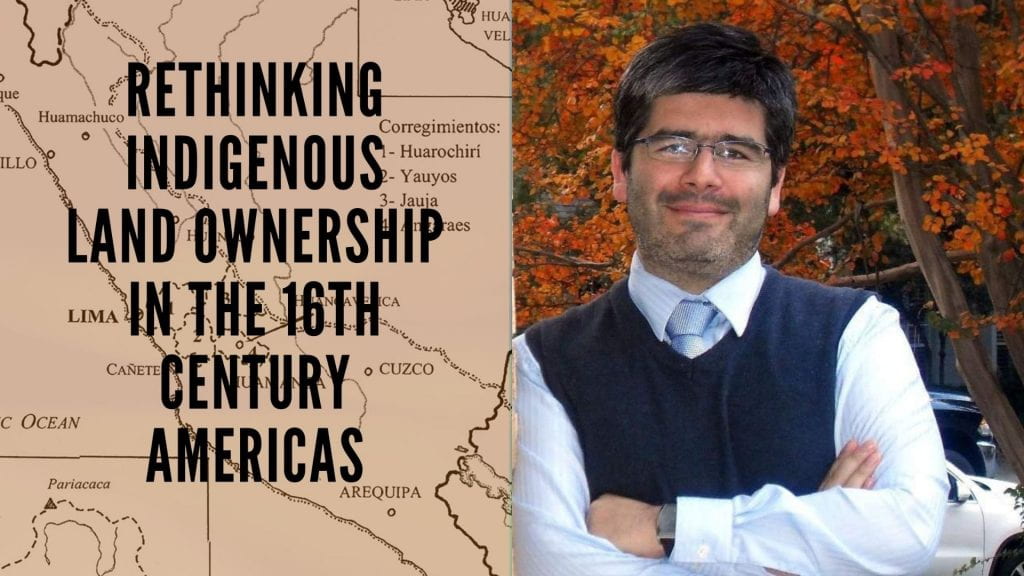
Who owned the pasture and farmland in the Americas during the 16th century? How did native and indigenous people understand the idea of land ownership? How was it different from the colonizing Europeans?
In a new article, “Of Widows, Furrows, and Seed: New Perspectives on Land and the Colonial Andean Commons” published in the Hispanic American Historical Review, Dr. José Carlos de la Puente (associate professor in the History Department), argues that native and indigenous cultures had a more blended and nuanced understanding of land ownership than once thought.
Historians still debate whether pre-colonial communities held all pasture and farmland in common and, therefore whether private or individual control over land was introduced after colonialism. Prior thinking draws dichotomies between individual versus collective ownership and use. Dr. de la Puente argues that indigenous communities did not subscribe to these dichotomies, according to his research into native colonial customs of commoning and uncommoning. “Individual and communal aspects of land within Native collectives were not opposite ends of a spectrum but instead coterminous ways of acting on—that is, exerting power and control over—the same resources,” he writes.
He found that collective labor did not always result in common ownership of land. Common fields coexisted with farmlands maintained mostly by households and families. He also found that lands switched control when power relations shifted. “Community was in no way antithetical to private control and use,” writes de la Puente. Native people used wills, titles, lawsuits, and other records, but even these documents “do not fully capture local practices of commoning and uncommoning.”
The article helps show the complex way that indigenous and native people understood land ownership and use. It also shows how native and indigenous cultures can teach new ways of thinking about land use outside of dichotomies between private versus public ownership.
